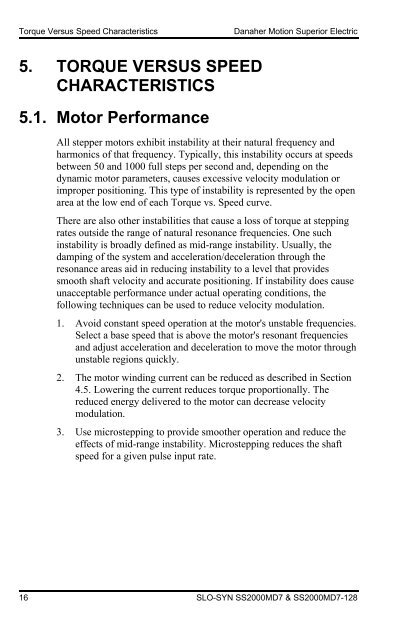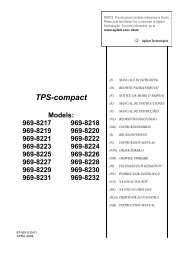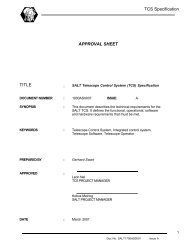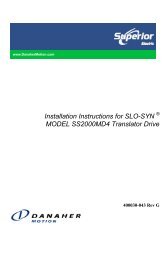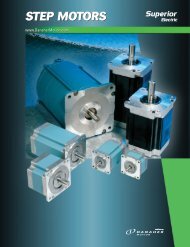You also want an ePaper? Increase the reach of your titles
YUMPU automatically turns print PDFs into web optimized ePapers that Google loves.
Torque Versus Speed Characteristics Danaher Motion Superior Electric<br />
5. TORQUE VERSUS SPEED<br />
CHARACTERISTICS<br />
5.1. Motor Performance<br />
All stepper motors exhibit instability at their natural frequency and<br />
harmonics of that frequency. Typically, this instability occurs at speeds<br />
between 50 and 1000 full steps per second and, depending on the<br />
dynamic motor parameters, causes excessive velocity modulation or<br />
improper positioning. This type of instability is represented by the open<br />
area at the low end of each Torque vs. Speed curve.<br />
There are also other instabilities that cause a loss of torque at stepping<br />
rates outside the range of natural resonance frequencies. One such<br />
instability is broadly defined as mid-range instability. Usually, the<br />
damping of the system and acceleration/deceleration through the<br />
resonance areas aid in reducing instability to a level that provides<br />
smooth shaft velocity and accurate positioning. If instability does cause<br />
unacceptable performance under actual operating conditions, the<br />
following techniques can be used to reduce velocity modulation.<br />
1. Avoid constant speed operation at the motor's unstable frequencies.<br />
Select a base speed that is above the motor's resonant frequencies<br />
and adjust acceleration and deceleration to move the motor through<br />
unstable regions quickly.<br />
2. The motor winding current can be reduced as described in Section<br />
4.5. Lowering the current reduces torque proportionally. The<br />
reduced energy delivered to the motor can decrease velocity<br />
modulation.<br />
3. Use microstepping to provide smoother operation and reduce the<br />
effects of mid-range instability. Microstepping reduces the shaft<br />
speed for a given pulse input rate.<br />
16 SLO-SYN <strong>SS2000</strong><strong>MD7</strong> & <strong>SS2000</strong><strong>MD7</strong>-128


